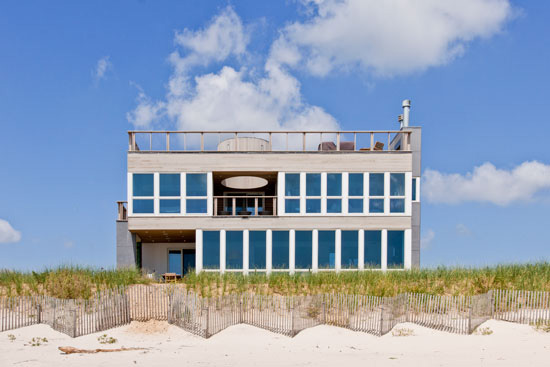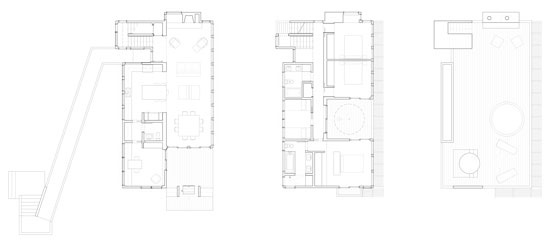Sustainability, Modular Design, and BIM
Resolution: 4 Architecture: Integrating Design and Construction
Among the many firms that have been inspired to embrace these trends in their practices is New York-based Resolution: 4 Architecture, founded by Joseph Tanney and Robert Luntz. They have built an impressive portfolio by providing affordable residential designs using custom, modern, sustainable, modular construction that reaches a broad client base. According to partner Robert Luntz, their approach “provides greater predictability during construction in terms of appearance, cost, and time schedule. Modular construction also controls waste and reduces or eliminates it notably, which is not only more sustainable—it also reduces disposal costs.” They also use BIM modeling to help capitalize on the other aspects of their approach to design and construction.
Over time, the members of the firm have come to understand how to engage with modular building manufacturers around the country. If the housing manufacturer is on board from the beginning of design, that tightens up communication and helps to ensure a smoother process. Luntz points out that “it is important to understand how a particular manufacturer’s process works and that the design dovetails into their way of building.” Commonly, they find that the manufactured building process uses conventional construction techniques, just in a customized production process using semi-skilled labor to achieve a speedier and more efficient fabrication. It also helps if the architect understands how to gain approvals and permits for a particular manufactured system, which can be done more easily if the manufacturer is involved earlier in the process.
The firm has observed that while the modular construction industry is highly systematized in terms of how it builds, it is less so when it comes to design. Most modular residential building factories use CAD to produce drawings at the level of detailed shop drawings, but so far they have been slow to adopt BIM. Nonetheless, Resolution: 4 Architecture designs all of its projects using a building information model for visualization and conflict resolution. The partners’ model also allows smaller firms like theirs to provide services nationally by readily sharing and collaborating with others on the design and fabrication process. This is particularly important when the client or project site is not nearby. Generally speaking, in order to be cost effective, the manufacturer needs to be located within 500 miles of the project site. There is some variation on that, of course, based on the difference between shipping constructed modules and the volume of air within them compared to a system of stacked panels that can require fewer trucks to ship. Nonetheless, the use of the building information model and a close working relationship with a manufacturer allows them to be successful in numerous locations. In fact, they have used this approach on projects where they interface daily during the design process with engineers located in different cities around the United States. The result is an optimized, affordable design process that helps ensure a better constructed outcome.
Perhaps as a testament to their success with designing modular and manufactured housing, the two partners have written their own book titled Modern Modular, which was published by Princeton Architectural Press in 2014. In it they share their integrated philosophy and approach in more detail, along with numerous examples of projects.











